Key takeaways:
- Effective speaker collaboration hinges on communication, mutual respect, and understanding each speaker’s unique strengths.
- Benefits of collaboration include diverse perspectives, personal growth, and a cohesive message that resonates with audiences.
- Implementing strategies like clear goal setting, regular check-ins, and leveraging technology enhances the collaborative experience.
- Building relationships through informal interactions and recognizing individual contributions fosters trust and a collaborative spirit.
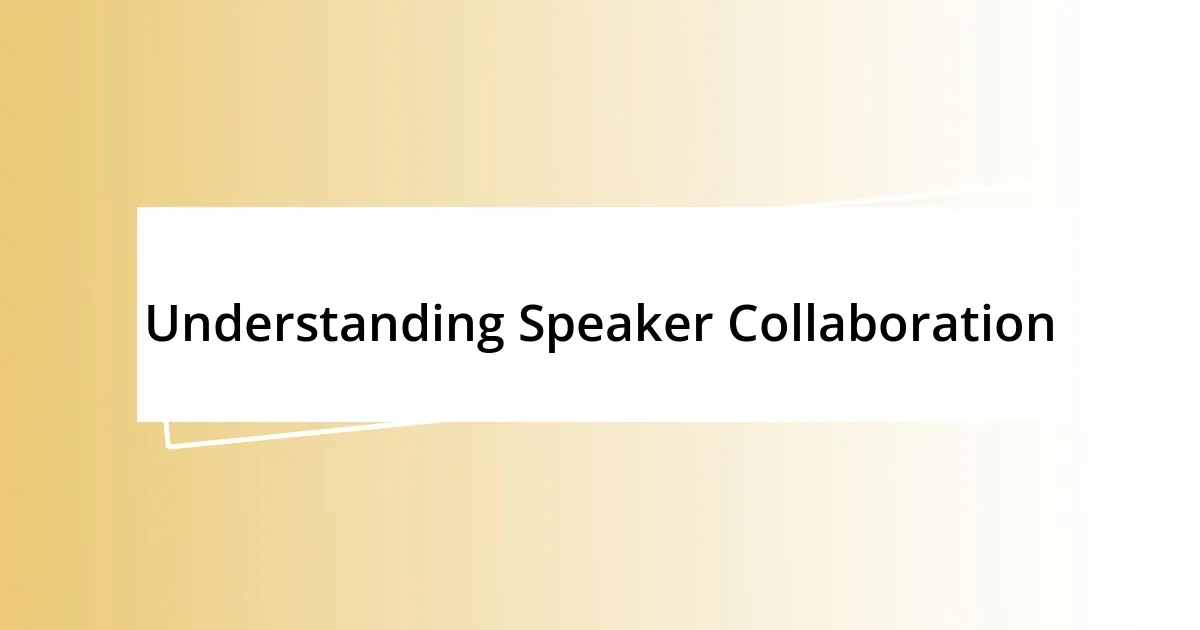
Understanding Speaker Collaboration
Understanding speaker collaboration is essential to creating impactful presentations. I remember a time when I co-hosted a workshop with a colleague, and we initially struggled to find common ground. It wasn’t until we spent time discussing our different perspectives that we harnessed our unique strengths, creating a seamless flow in our presentation.
Collaboration isn’t just about sharing the stage; it’s about developing a shared vision and understanding each speaker’s individual strengths. Have you ever found yourself in a conversation where the synergy was so strong that ideas just flowed effortlessly? That feeling is what speaker collaboration aims to achieve, enabling each participant to thrive in their role and elevate the overall message.
Also, let’s not overlook the importance of communication in fostering this collaboration. I’ve learned that open dialogue before, during, and after a speaking engagement can lead to invaluable insights. It transforms merely presenting into an enriching experience, both for the speakers and the audience. What strategies do you find effective in ensuring that all voices are heard during collaborative projects?
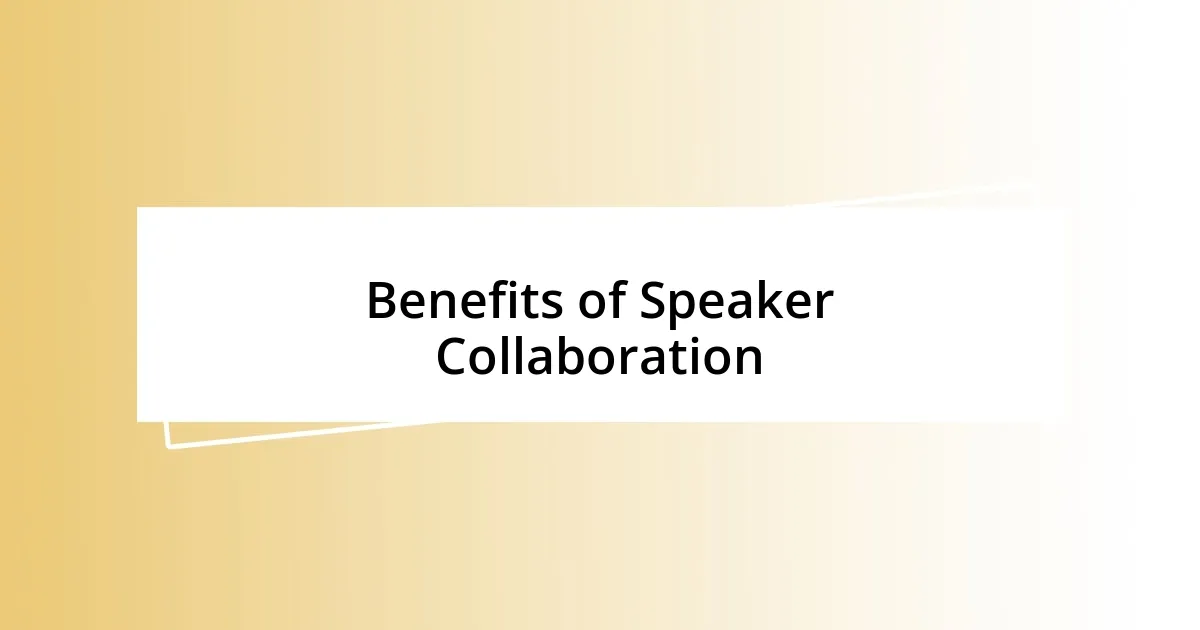
Benefits of Speaker Collaboration
Speaker collaboration brings numerous benefits, some of which can profoundly transform the experience for both the speakers and the audience. In my experience, working closely with others often leads to a richer variety of ideas. For instance, during a panel discussion, I teamed up with industry experts who had varying backgrounds. The diverse perspectives not only made the conversation more dynamic but also heightened audience engagement as they resonated with multiple viewpoints.
Another significant benefit lies in the opportunity for personal growth. By collaborating with different speakers, I have been able to learn new techniques and refine my own presentation style. I vividly recall a time when I observed a colleague use storytelling to emphasize a point. It inspired me to adapt that technique in my own presentations, ultimately elevating my delivery and connecting more deeply with the audience.
Lastly, the synergy created through collaboration often results in a cohesive message that resonates more powerfully. I’ve been part of several collaborations where the combination of different topics created a powerful narrative thread. This not only strengthened our main message but also left a lasting impact on the audience, showcasing how the integration of various insights can lead to a more robust experience.
| Benefit | Description |
|---|---|
| Diverse Perspectives | Collaboration leads to varied ideas, enhancing audience engagement. |
| Personal Growth | Learning from others’ techniques can refine your own presentation style. |
| Cohesive Message | Combining insights creates a stronger, lasting impact on the audience. |
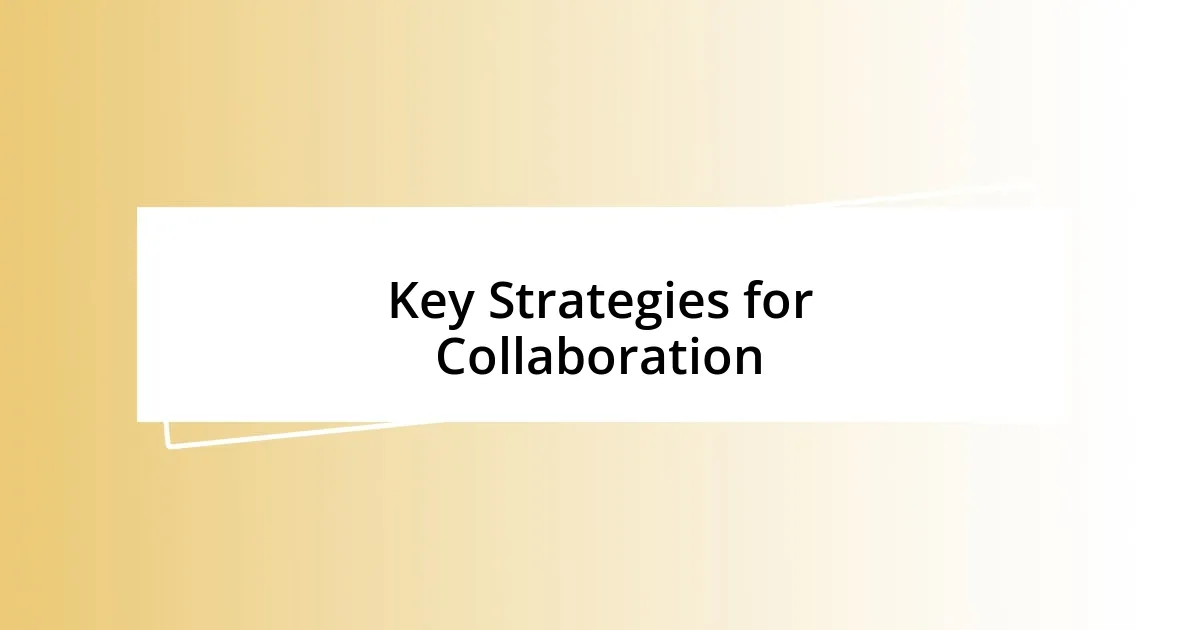
Key Strategies for Collaboration
To foster effective collaboration among speakers, establishing clear roles is vital. When I participated in a conference with multiple presenters, we mapped out each person’s contributions beforehand. This approach not only minimized confusion but also empowered each speaker to shine in their designated area. I remember how comforting it felt to know I could focus on my segment while trusting my colleagues to excel in theirs.
Here are some key strategies that I’ve found effective in promoting collaboration:
– Establish Clear Goals: Define what you want to achieve together. This shared purpose drives collective efforts.
– Regular Check-Ins: Schedule brief meetings to discuss progress and address any concerns.
– Encourage Feedback: Make it a norm to give and receive constructive feedback. I cherish how this habit deepens trust and enhances the final product.
– Leverage Technology: Use collaborative tools to share resources and ideas seamlessly. I’ve had great success using shared documents to spark creativity!
– Celebrate Milestones Together: Acknowledging achievements, no matter how small, cultivates a sense of unity and motivates everyone involved.
Engagement is equally crucial for collaboration. During one particular project, we decided to hold brainstorming sessions that felt more like informal gatherings. It amazed me how much creativity blossomed when we weren’t confined by rigid structures. Those moments of laughter and shared ideas made the collaboration feel like a natural extension of our individual strengths. By creating a relaxed atmosphere, we could delve deeper into each other’s ideas, leading to unexpected but brilliant results!
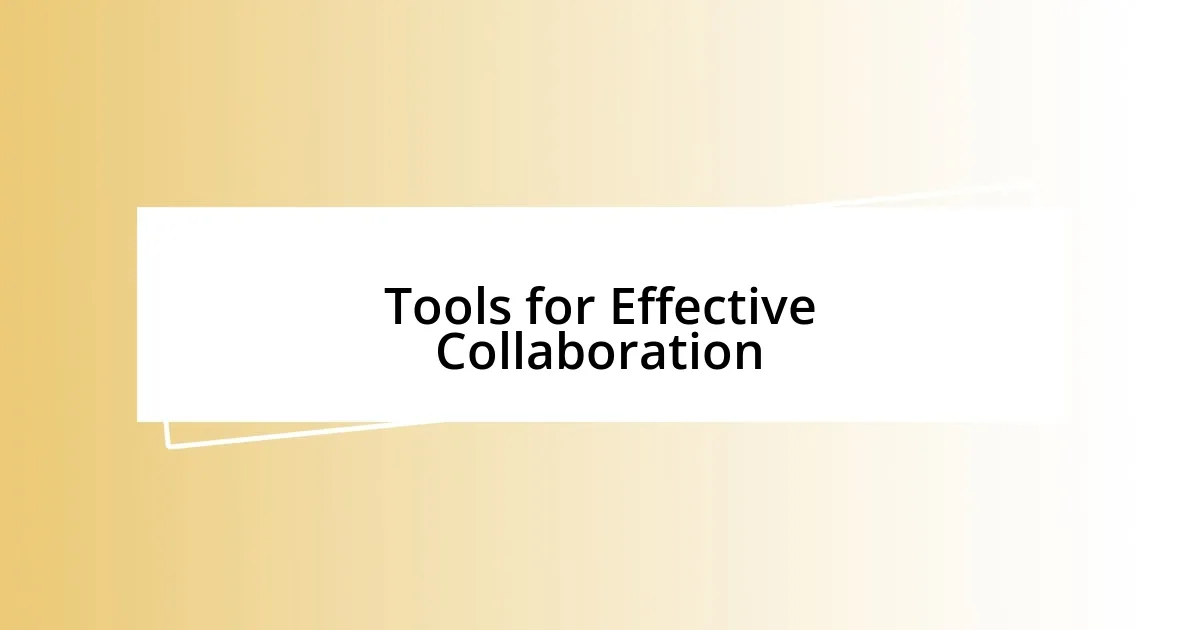
Tools for Effective Collaboration
To foster effective collaboration, several tools can enhance communication and creativity among speakers. Personally, I’ve found that platforms like Slack and Microsoft Teams keep everyone connected, making it easy to share ideas or provide feedback in real-time. I remember a particularly hectic preparation phase for a seminar where we constantly exchanged messages—those quick chats fostered a sense of camaraderie that kept our spirits high.
One of my go-to tools has been Google Docs, especially during collaborative writing sessions. The ability to see each other’s edits live is a game-changer. I recall collaborating with a team on a presentation where we crafted our content simultaneously. Watching those ideas bloom in real time felt exhilarating! It’s amazing how much trust and creativity can grow when you eliminate the barriers of isolated workspaces.
Regularly utilizing digital whiteboards, like Miro, transforms brainstorming into an interactive experience. I can still picture a vibrant session we had, where we visually mapped out our ideas. Each colored sticky note represented a thread of creativity, and the energy in the virtual room was palpable. Have you ever felt inspired just by visualizing your thoughts alongside others? I certainly have, and it’s a reminder that collaborative tools can ignite ideas that might otherwise remain dormant.
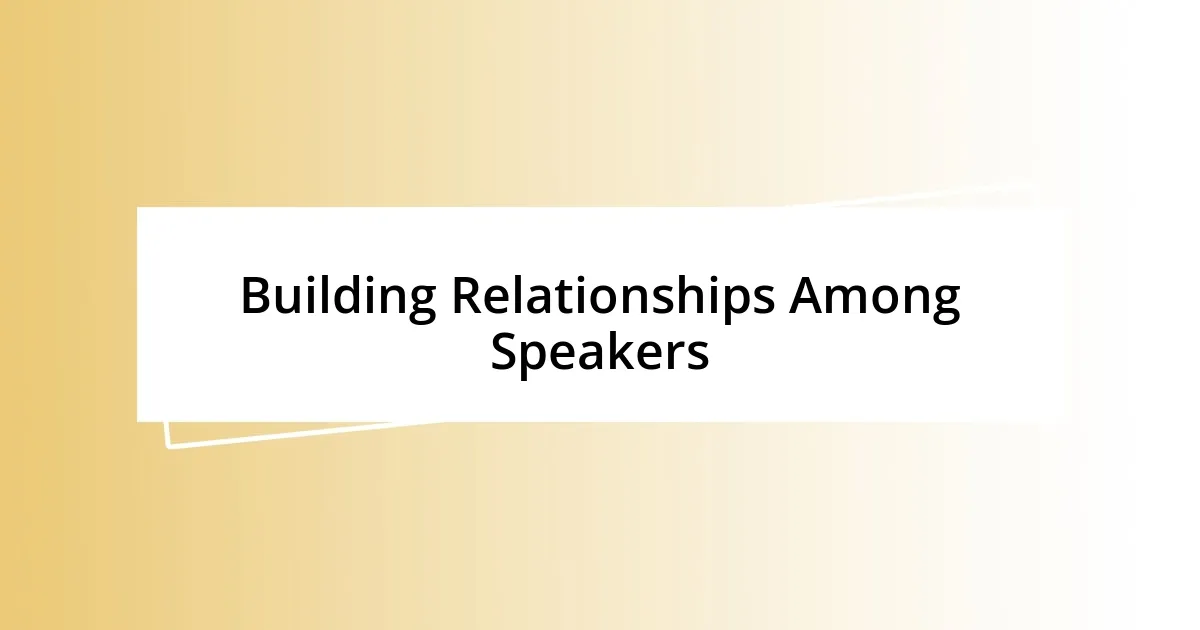
Building Relationships Among Speakers
Building relationships among speakers is truly a fundamental aspect of collaboration. I vividly recall a time when I joined a panel for a community event. Before the event, we spent an afternoon over coffee, sharing our backgrounds and experiences. I realized how much our casual conversations fostered trust and laid a foundation for teamwork. It became clear that when speakers are comfortable with one another, the synergy flows naturally during discussions.
I believe that informal gatherings can also be instrumental. After one particularly intensive brainstorming workshop, we decided to unwind at a nearby café. Simply sharing laughter and stories about our experiences—not directly related to the event—created a bond that strengthened our teamwork. Isn’t it fascinating how shared experiences outside a formal context can enhance our ability to collaborate effectively?
Another essential element in building relationships is recognizing individual strengths. I once worked with a colleague who had a knack for storytelling. I encouraged her to lead a segment on narrative techniques, which not only showcased her talent but also brought us all together in admiration of her skills. When we celebrate each other’s unique contributions, it fosters respect and camaraderie, igniting a collaborative spirit that is hard to replicate. Don’t you think that acknowledging one another’s strengths can transform a group dynamic? I certainly do!
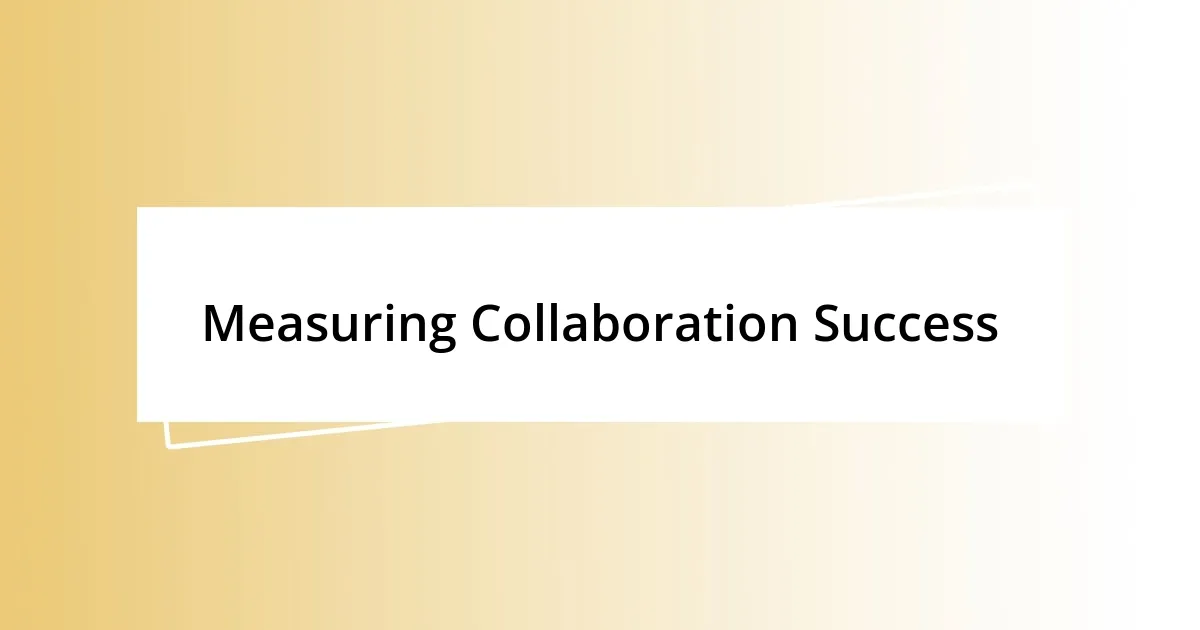
Measuring Collaboration Success
Measuring the success of collaboration can initially seem daunting, but there are practical ways to quantify it. I remember when I participated in a project where we set specific goals and tracked our progress using a shared spreadsheet. Each week, we would review how we met our deadlines and standards. This not only provided a visual representation of our collaboration but also held us accountable to one another, which kept the momentum going.
Feedback is another powerful indicator of collaboration success. After one major event, we conducted a survey to gauge how our teamwork impacted the overall experience. The responses were enlightening; not only did they highlight what worked well, but they also revealed areas for improvement. I found it inspiring to see how openly the team shared their thoughts—could there be anything more rewarding than knowing your joint efforts are appreciated?
Lastly, I believe that observing the quality of the output speaks volumes. During a collaborative seminar, I felt a shift in our final presentation—it was richer and more exhilarating than previous solo efforts. Each speaker brought a unique flavor, and I could see our audience captivated. Have you ever noticed how a well-rounded group can transform dull data into an engaging story? It’s moments like these that clearly showcase the true value of collaboration.
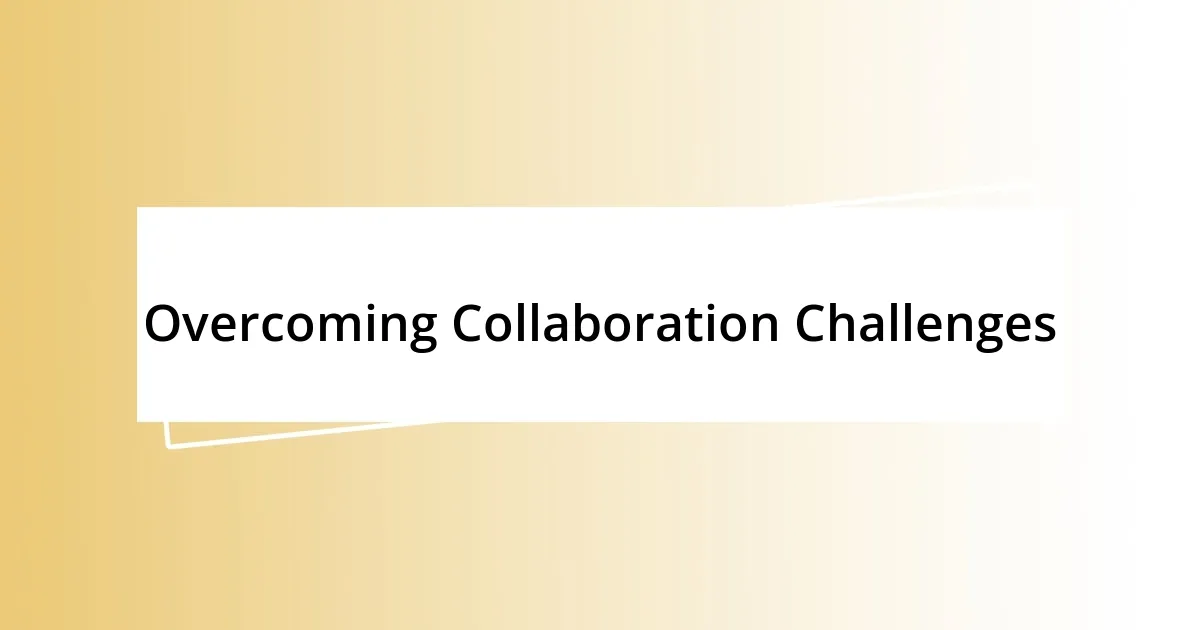
Overcoming Collaboration Challenges
When it comes to overcoming collaboration challenges, clear communication is key. I remember being part of a project where miscommunication led to overlapping efforts among team members. It was frustrating, to say the least. To fix this, we established a regular check-in system where we shared updates and concerns. It transformed our dynamic significantly—suddenly, everyone was on the same page. Doesn’t it feel great when clarity reduces unnecessary stress?
Listening actively to each person’s concerns also plays a vital role in overcoming obstacles. During one project, a colleague expressed feeling overwhelmed by their tasks. Instead of brushing it off, I encouraged them to voice their worries in our group meetings. The result? We reassigned tasks based on everyone’s comfort levels. That moment reminded me that sometimes, lending an ear can be all it takes to nurture the collaborative spirit. Have you ever experienced the relief that comes from openly addressing challenges as a group?
Clarifying roles and responsibilities can greatly mitigate misunderstandings as well. In another instance, I found myself confused about my role in a collaboration, which left me hesitant and less engaged. Once we mapped out each person’s contributions, the anxiety lifted, and I could focus on my part with confidence. I find that a well-defined structure not only brings accountability but also empowers everyone involved. Isn’t it amazing how a little organization can lead to a more productive and meaningful collaboration?












